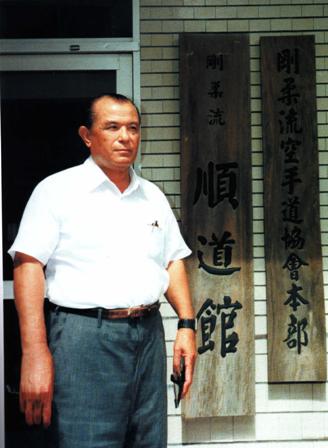Thanks to the Budo of long ago, the present day spread and development of karate can be attributed to the respect that is shown to each other and especially to the teacher. It holds others in esteem, and is modest.

Rei (politeness or manners) is at the very soul of Budo. So much so that it is said, it „begins with Rei and ends with Rei“, The true motive/meaning for those who study Budo is in the spirit of training. The body and the spirit work in harmony with each other, as the saying goes. Without training the spirit there is no physical or technical training.
One must respect the normal social order and must endeavor to build character in harmony with life in society.
When kata is performed, the kata is begun with a standing bow and ends with a standing bow expressing respect.
For Kumite, the competitor faces the front (shomen) and bows standing, then face each other, bow standing, and then beginning. Once finished, they bow to each other then to the front.
The standing bow is not a straight posture but one that bends naturally forward from the waist (about 30 degrees). The fingers of the both hands should slide down to about 10 centimeters above the kneecaps.
This is how respect is expressed.
The straight posture consists of heels together, feet pointing about 60 degrees out, knees lightly straightened, head held proper, mouth c1osed, eye looking straight at eye level, arms naturally at the sides, fingers lightly extended and at the side of the body. All should come together in one breath.
Il CONCERNING „REI“ (POLITENESS)
(Miyazato Eiichi – Okinawa Den Goju Ryu Karate-do, 1978)

